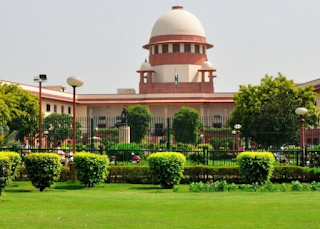Introduction
India's rich history is a tapestry woven with the stories of various dynasties and kingdoms, each with its unique legacy. Among the lesser-known yet fascinating chapters in Indian history is the Arakkal Kingdom. Situated in the picturesque Malabar Coast of Kerala, the Arakkal Kingdom stands as a testament to the region's cultural diversity and historical significance.
The Origins of Arakkal Kingdom
The Arakkal dynasty traces its roots to the 16th century when it was founded by Ali Raja, the nephew of the last Kolathiri King of Malabar. The kingdom's establishment was a result of Ali Raja's remarkable naval skills and his alliance with the British East India Company. This collaboration allowed the Arakkal rulers to maintain a degree of autonomy over their coastal territories while acknowledging British suzerainty.
List of notable rulers of the Arakkal Kingdom
There are various Ali Raja or Queen rules the Kigndom, here we have listed some of the rulers from history.
1. Ali Raja Kunhi Amsa II (c. 1760–1782): Ali Raja Kunhi Amsa II was one of the prominent rulers of the Arakkal Kingdom. His reign was marked by significant achievements in trade and diplomacy.
2. Ali Raja Abdu Raja (c. 1782–1798): Ali Raja Abdu Raja succeeded Kunhi Amsa II and continued the kingdom's maritime activities and trade relations with various colonial powers.
3. Ali Raja Raja Raja (c. 1798–1825): Ali Raja Raja Raja, also known as Ali Raja Beevi, was a notable queen who ruled the Arakkal Kingdom during a significant part of the 19th century.
4. Ali Raja Kerala Varma (c. 1861–1900): Ali Raja Kerala Varma played a crucial role in the kingdom's relations with the British colonial authorities. His reign witnessed various changes and challenges.
5. Ali Raja Bibi Junumabe II (c. 1900–1911): Queen Ali Raja Bibi Junumabe II succeeded Kerala Varma and was known for her progressive outlook and efforts to promote education.
6. Ali Raja Beevi (c. 1911–1921): Another prominent queen, Ali Raja Beevi, ruled during a period of significant political and social changes.
7. Ali Raja Pathumma Beevi (c. 1921–1931): Ali Raja Pathumma Beevi's reign marked the later years of the Arakkal Kingdom as it faced external pressures from colonial powers and the changing political landscape.
8. Ali Raja Raja Ali (c. 1931–1946): Ali Raja Raja Ali, the last ruler of the Arakkal Kingdom, witnessed the integration of the kingdom into the Indian state of Kerala after India's independence in 1947.
Unique Matriarchal Succession
One of the most distinctive features of the Arakkal dynasty is its system of matriarchal succession. In a time when most Indian kingdoms followed male primogeniture, the Arakkal rulers passed the throne to the eldest female member of the family. This progressive practice set the Arakkal dynasty apart and has fascinated historians and sociologists alike.
Arakkal Queens
Several remarkable queens ruled the Arakkal Kingdom during its existence. Among them, Queen Aysha Bai is particularly renowned for her leadership and diplomatic skills. Her reign marked a period of stability and prosperity for the kingdom. The Arakkal queens played pivotal roles in trade, diplomacy, and the administration of their coastal realm.
Naval Prowess and Trade
The Arakkal rulers were known for their formidable naval forces. They controlled a powerful fleet that patrolled the Arabian Sea and protected their coastal territories from threats. The kingdom's strategic location on the Malabar Coast facilitated trade relations with various European powers, including the British, Portuguese, and Dutch. Spices, timber, and other valuable commodities were traded through the Arakkal ports, contributing to the region's economic growth.
Cultural Diversity and Syncretism
The Arakkal Kingdom was a melting pot of cultures and religions. Its population included Hindus, Muslims, Christians, and Jews, among others. This diversity led to a unique cultural syncretism, where traditions and festivals from different faiths coexisted harmoniously. The Arakkal rulers were known for their tolerance and support of various religious practices.
Decline and Integration
The decline of the Arakkal Kingdom began in the 19th century when it faced internal strife and external pressures from colonial powers. Eventually, in 1947, with India's independence, the kingdom was integrated into the newly formed Indian state of Kerala. The last ruler, Arakkal Mohammad Ali Raja, continued to be respected in the region for his efforts to promote education and social welfare.
Preserving the Legacy
Today, remnants of the Arakkal Kingdom's heritage can still be found in Kerala. The Arakkal Palace, located in Kannur, stands as a symbol of this once-great kingdom. It has been converted into a museum, showcasing artifacts, documents, and memorabilia from the Arakkal dynasty. The palace and museum provide a glimpse into the kingdom's history, its rulers, and the unique culture that thrived there.
Conclusion
The Arakkal Kingdom of India, with its matriarchal succession, naval prowess, and cultural diversity, remains a captivating chapter in the nation's history. It serves as a reminder of the intricate tapestry of India's past and the remarkable legacies left by its lesser-known dynasties. Exploring the Arakkal Kingdom offers a fascinating journey into a world where tradition and progress coexisted in harmony.



